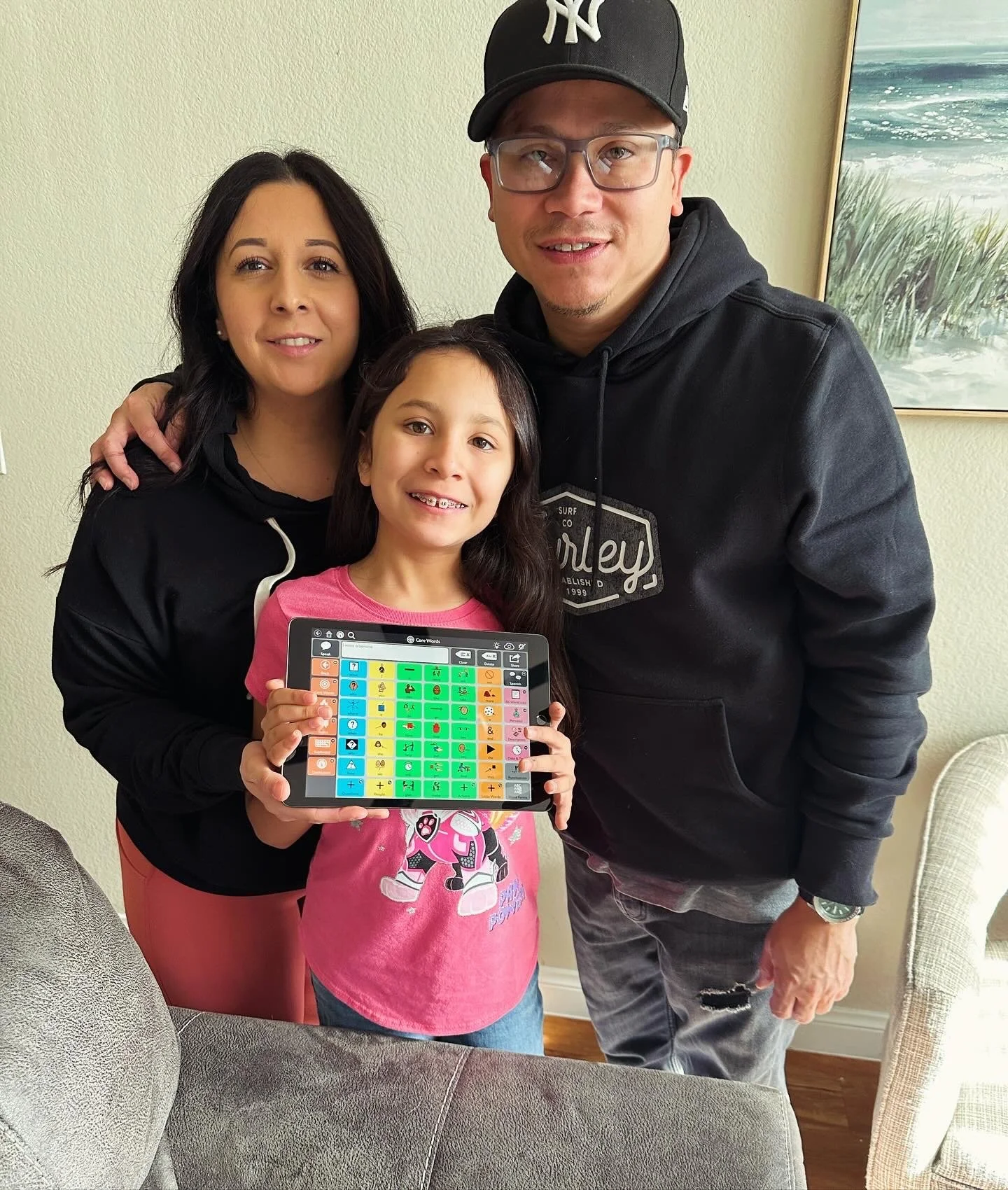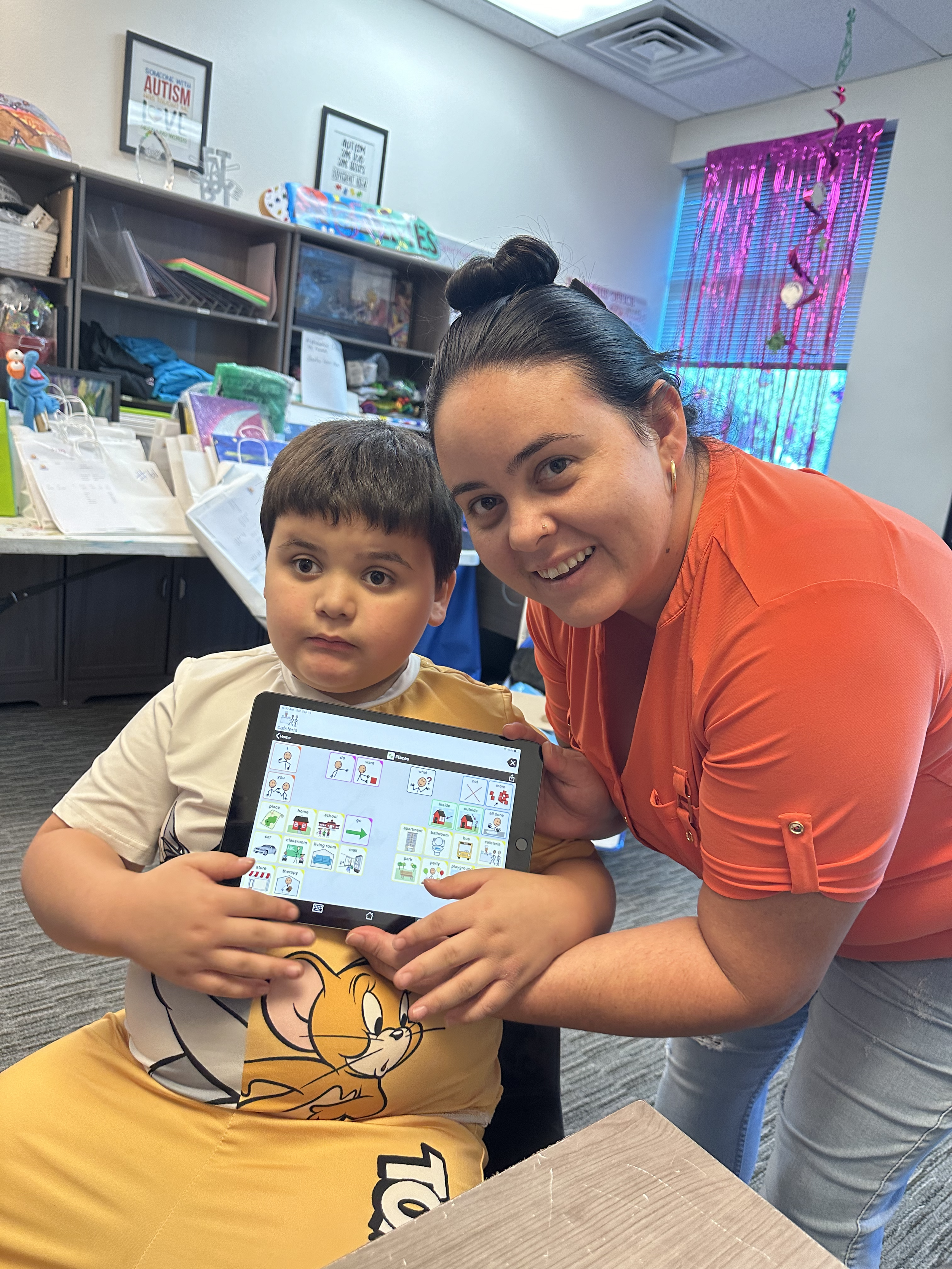Helping Autistic Children to Communicate
2024 Grant Cycle
Giving a Voice to the Voiceless
In the U.S., autism affects an estimated 1 in 31 children. Of those, nearly 40 percent are nonverbal or experience delayed speech – making everyday communication a challenge many of us take for granted.
While assistive technology exists to help these children express themselves, it’s often out of reach for low-income families. That’s where Communication Autism Resources (C.A.R.) steps in.
“We all deserve the right to communicate,” says Cheryl Victor, Founder and Executive Director for C.A.R. “Being able to communicate can change your quality of life.”
Founded in 2020, C.A.R. provides assistive communication tools to underserved kids with autism who are nonverbal.
“Assistive technology is anything that enhances your life,” says Victor. “That could be as simple as a pair of glasses to help you see, or a cane to help you walk. In this case, it’s a tool that enhances their ability to communicate.”
For kids with autism who are nonverbal, that assistive technology comes in the form of Augmentative and Alternative Communication, or AAC. Methods can range from sign language to pictures and light technology to high tech devices that can cost thousands of dollars.
Through C.A.R., each child receives an iPad preloaded with a communication app that uses pictures, symbols, and vocabulary, allowing children to tell an adult what they need.
“I always use the example of Stephen Hawking – he was brilliant, but he required assistive technology to tell us what he knew. It’s the same with these kids,” says Victor. “Before, we just had sign language, which limits your community because if I don’t sign, I can’t communicate with you. But if you can point to a picture of a hamburger on your iPad, anyone can tell you want a hamburger.”
This technology not only empowers children to express their needs and desires to adults but also helps resolve behavioral issues that often stem from an inability to communicate.
“Families always tell us the impact is huge,” says Victor. “They no longer have to guess. They’re always trying to figure out what the child wants, and the child gets frustrated when they don’t understand and starts acting out. Once the child can communicate what they need, it changes the whole family dynamic.”
Each iPad and app combination costs C.A.R. around $500 – an expense made possible through generous donors and grants, including a $7,500 award from The Bower Fund in 2024. That funding enabled the nonprofit to buy 12 new iPads, 18 app licenses, and provide additional resources and services to families.
Parents consistently express gratitude for the difference the technology has made.
“The use of the technology has allowed my child to feel more confident, and if someone does not understand what he is saying, he knows he can use the iPad to support what he needs,” said one parent.
Another parent commented, “Since my daughter received the iPad, she has learned how to communicate her needs in one sentence. Before, she would only use one word. In a very short time, the iPad has made a great difference regarding her communication.”
Victors’ passion for advocacy began more than two decades ago when her own son was diagnosed with autism at age three. She started as a substitute teacher in the Clark County School District to support him, eventually becoming an Assistive Technology Specialist, a role that introduced her to AAC tools and inspired the creation of C.A.R.
“Once I learned about it, I wondered why more people weren’t aware of it?” says Victor. “I knew I needed to bridge the gap between home and school, so I started the non-profit in 2020 to help families and students afford the technology.”
Since its inception, C.A.R. has helped 175 children find their voices, provided more than 700 hours of training to 350 families, and distributed 144 iPads with communication apps to low-income families.
Despite the program’s success, the need continues to grow.
“We only focus on kids up to a certain age, but I also hear from a lot of adults that never got a chance to have their voice heard because the technology didn’t exist when they were a kid,” says Victor. “So, they’ve lived their whole life without having a voice. We don’t have the funding to cover everyone, but many adults need this type of support too.”
Victor notes that funding from The Bower Fund not only directly helps the kids and their families, but it has also helped C.A.R. grow.
“I’m now working with other organizations thanks to The Bower Fund,” says Victor. “Their funding has allowed me to show other people how it’s helping kids, and now other organizations want to get involved as well.”
To learn more about Communication Autism Response – or to get involved – visit https://carlv.org/.



